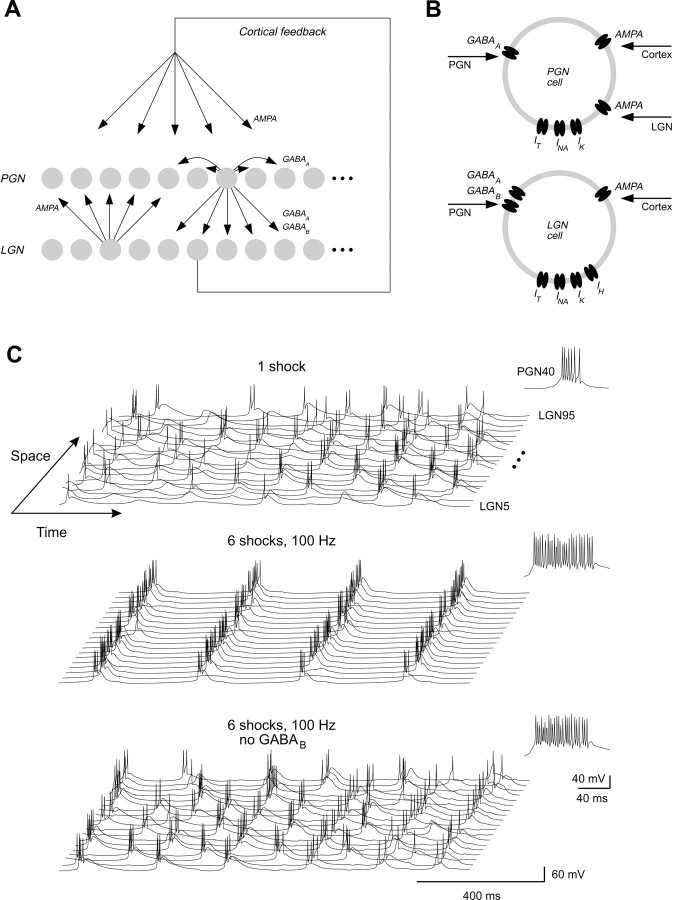Fig. 1.
Computational model prediction of the control of thalamic oscillations by corticothalamic feedback. A,Scheme of the thalamic circuit. A network consisting of two one-dimensional layers of LGN and PGN neurons (100 cells each) was simulated with topographic connections mediated by glutamate (AMPA) receptors and GABAergic (GABAA and GABAB) receptors as indicated. One cell (LGN cell 10) was the trigger of the cortical feedback, which was simulated through AMPA conductances in all cell types. The connectivity and conductances used were identical to a previous study (Destexhe et al., 1996) with additional corticothalamic feedback conductances of 1–4 μS in PGN and 0.05–0.5 μS in LGN cells. B, Scheme of the different ionic mechanisms present in each cell type. The voltage-dependent currents IT,Ih,INa, andIK were needed to simulate the intrinsic bursting patterns of thalamic neurons. C, Spatiotemporal network activity raster plots, detailing the results of the simulation of the feedback experiment. Top, Feedback stimuli consisting of a single shock produced bursting patterns typical of spindle oscillations. Middle, Strong feedback (6 shocks at 100 Hz) synchronized the burst discharges of LGN cells and switched the oscillation frequency to 3 Hz in the entire network, although only one cell served as the trigger. Bottom, Suppressing GABAB receptors led to the reverse transformation from 3 to 10 Hz spindle oscillations, and the feedback was ineffective in inducing the 3 Hz rhythm. Each graph represents 19 equally spaced LGN cells in the network, and an example of PGN burst is shown ininset. A delay of 25 msec was used in all simulations.

